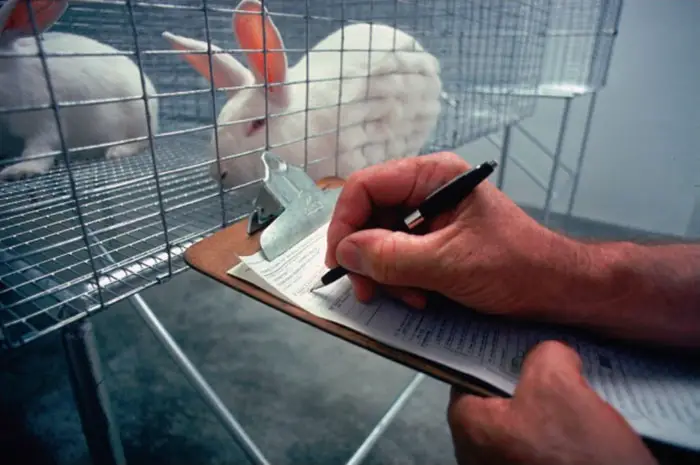Before most products sold can be used on human skin, it must first undergo a battery of tests. These examinations not only ensure that the products functions or performs the way it designed, but also to make sure that there can be no adverse side effects for the user. The formula and chemicals first undergo scrutiny within the labs and boardrooms of the cosmetics companies, where technicians, researchers, and scientists discuss its pros and cons.
The candidate subjects for these tests are not humans, but animals. Everything from cats to dogs and rabbits to rodents has all suffered in some way as a result from being tested upon in the name of producing a marketable beauty product. These animals would sometimes go through unspeakable tortures that, were they done on humans, would surely violate human rights conventions. The real barrier that prevents people from testing on each seems to casually neglected when it comes to other species.
In a lab setting animals are devoid of special touch or affection. They are not treated as living things, in the sense that they must be cared for and treated with respect, but rather as parts of an experiment that bear little difference to a microscope, eyedropper or Petri dish. They relegated to the status of a tool and nothing more. And, just like the rest of the tools, they are discarded or disposed of when they have served their purpose. Such an existence is not only sad but in many ways immoral.
There are many ways to describe the horrors that animals must face in the cosmetic testing world, but the terms “gross” and “disgusting” would have to rank near the top of the list. Take the case of rabbits for example. Outside the lab’s rabbits, or “bunnies,” are cute parts of the environment, landscape, and even the family home. Their floppy ears, twitching noses, and bulbous eyes make it very easy for kids and adults to fall in love with them. However, it is those same eyes that also makes them a prized test subject. Rabbits have extremely sensitive tissues around the eyes, which unfortunately makes them the perfect candidate upon which to test eye makeup and other products that may affect sight, vision and eye health.
Please note that when cosmetics companies test for products they do so to find the minimum and maximum tolerance ranges. It means that on one end of the spectrum they will apply substances that will cause the least bit of reaction, while on the other end they will implement the products that will most surely blind or kill the animal. The substances can be caustic, poisonous, and cancerous. To researchers and cosmetic companies, the pain and suffering that the animal put through not even take into consideration. The only thing that they are worried about is dosage, the correlating reaction, finding the tolerance levels and finally getting it to a level that will be safe to use on humans. That’s it! There is no mourning, no sense of loss, and no grief for the passing and suffering of the animal.
Cosmetic testing on animals claims the lives of animals around the globe to the tune of 25-50 billion animals. The majority of these animals are not wild but have been bred specifically to tested it. Many of them have never stepped foot on grass or dirt, or have tasted air outside of the laboratory. It is done purposefully, if not sadistically, to decrease the number of variables and maintain a high-level control in the experiments. The sad, and perhaps infuriating, part of this whole thing is that the entire process is wildly ineffective. 92% of the animal tested products passed by the Food and Drug Administration (FDA) are still considered poisonous, cancerous, harmful or deadly. The reason why this practice is still using is to determine the Lethal Dose (LD) of products. As a disclaimer, the determination of a products LD50 (the dose that kills 50% of the test sample) is crucial, but to do so at the expense of an animal’s life and well-being should, and does not, sit well with a lot of people.
Some may say that animal testing is necessary to ensure that products are safe for human use, and there is a tinge of truth to this in that humans do want other people to be safe. However, what many people overlook is the simple fact that there are viable alternatives to animal testing.
Instead of using living animals, scientists can use cell and skin tissue cultures that grow, eyes from cadavers, and even computerized, mathematically driven models to come out to the same conclusions. There are other ways; there are safe ways, there are less harmful ways.
Source & author: www.customwritings.com







Leave a Reply